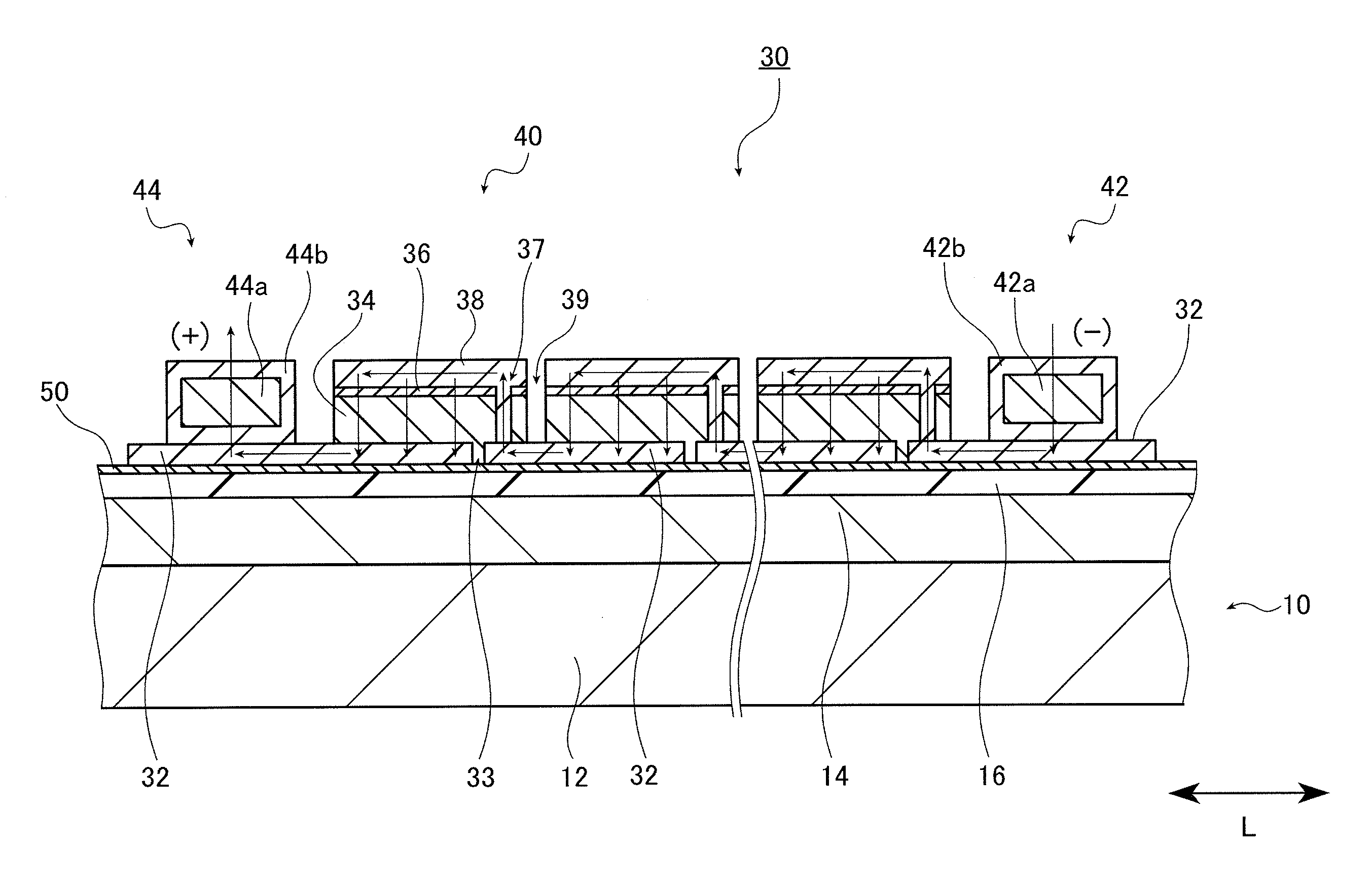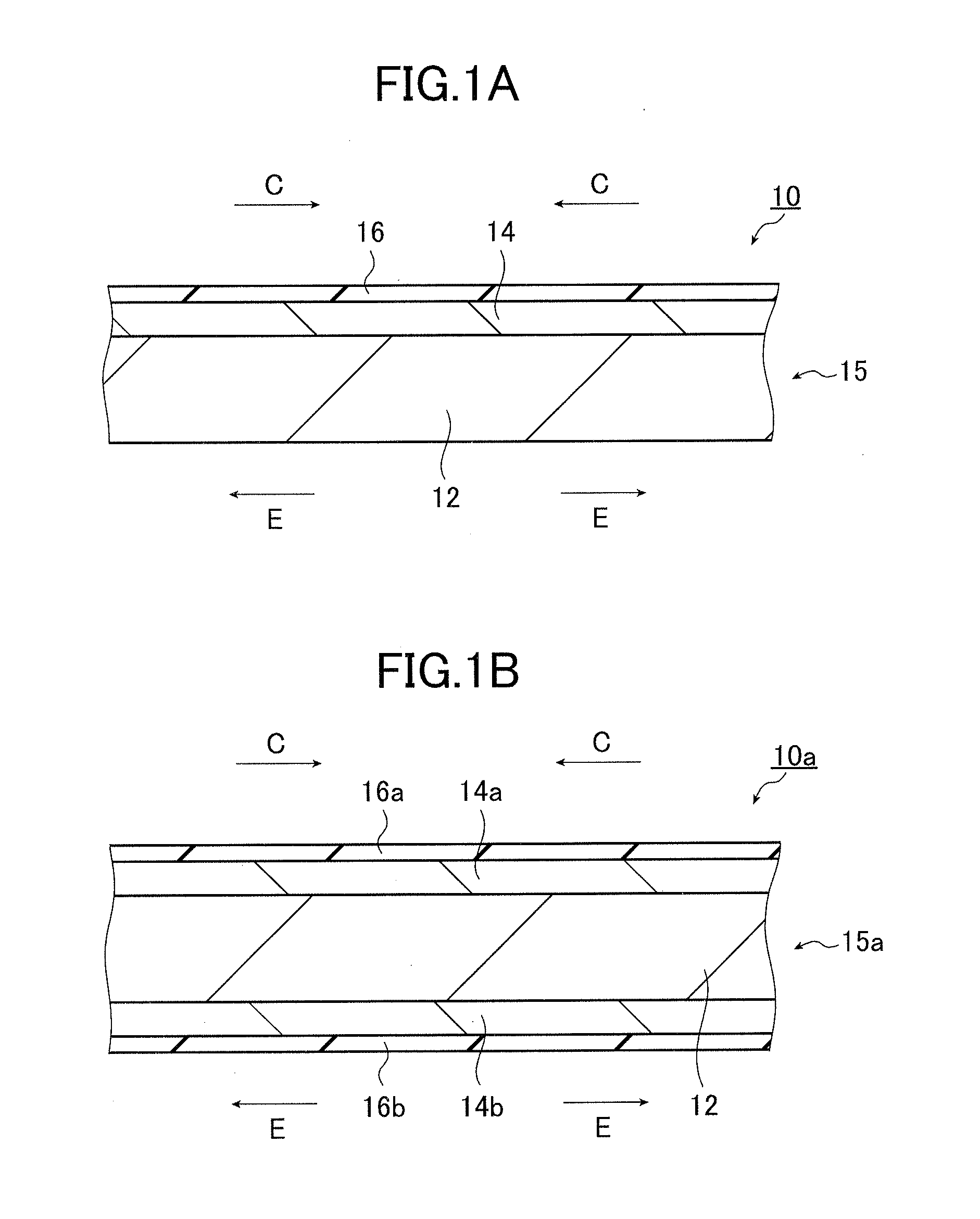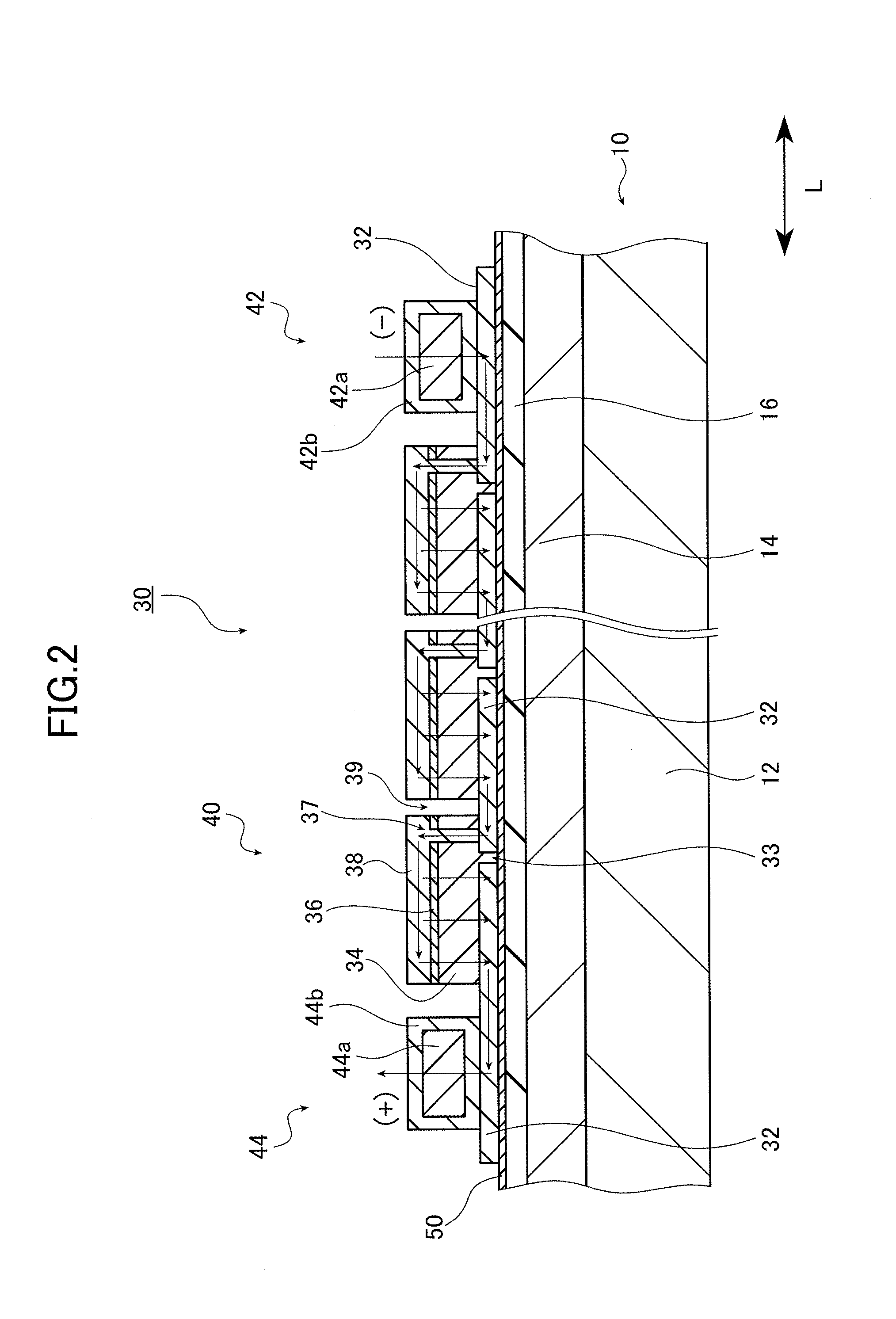Solar cell and solar cell manufacturing method
- Summary
- Abstract
- Description
- Claims
- Application Information
AI Technical Summary
Benefits of technology
Problems solved by technology
Method used
Image
Examples
working example 1
[0263]Next, the invention is described in further detail by referring to specific examples of the solar cell of the invention.
[0264]In Table 1 below, A to E shown in the metallic base column indicate the structure of the substrate, and the details thereof will now be described.
[0265]The following describes the metallic bases A to E, anodization, and annealing.
Metallic Base A (Inventive Substrate)
[0266]A commercially available ferritic stainless steel (material type: SUS430) and high-purity aluminum (aluminum purity: 4N) were pressurized and bonded by cold rolling to prepare a two-layer clad material including a base 12 (ferritic stainless steel) with a reduced thickness of 50 micrometers and an Al layer 14 with a reduced thickness of 30 micrometers. The clad metallic base was thus obtained.
[0267]The back surface (opposite from the Al layer 14) and the end surfaces of the base 12 in the two-layer clad material were then covered with a masking film. Next, ultrasonic cleaning was perfo...
PUM
 Login to View More
Login to View More Abstract
Description
Claims
Application Information
 Login to View More
Login to View More - R&D
- Intellectual Property
- Life Sciences
- Materials
- Tech Scout
- Unparalleled Data Quality
- Higher Quality Content
- 60% Fewer Hallucinations
Browse by: Latest US Patents, China's latest patents, Technical Efficacy Thesaurus, Application Domain, Technology Topic, Popular Technical Reports.
© 2025 PatSnap. All rights reserved.Legal|Privacy policy|Modern Slavery Act Transparency Statement|Sitemap|About US| Contact US: help@patsnap.com



